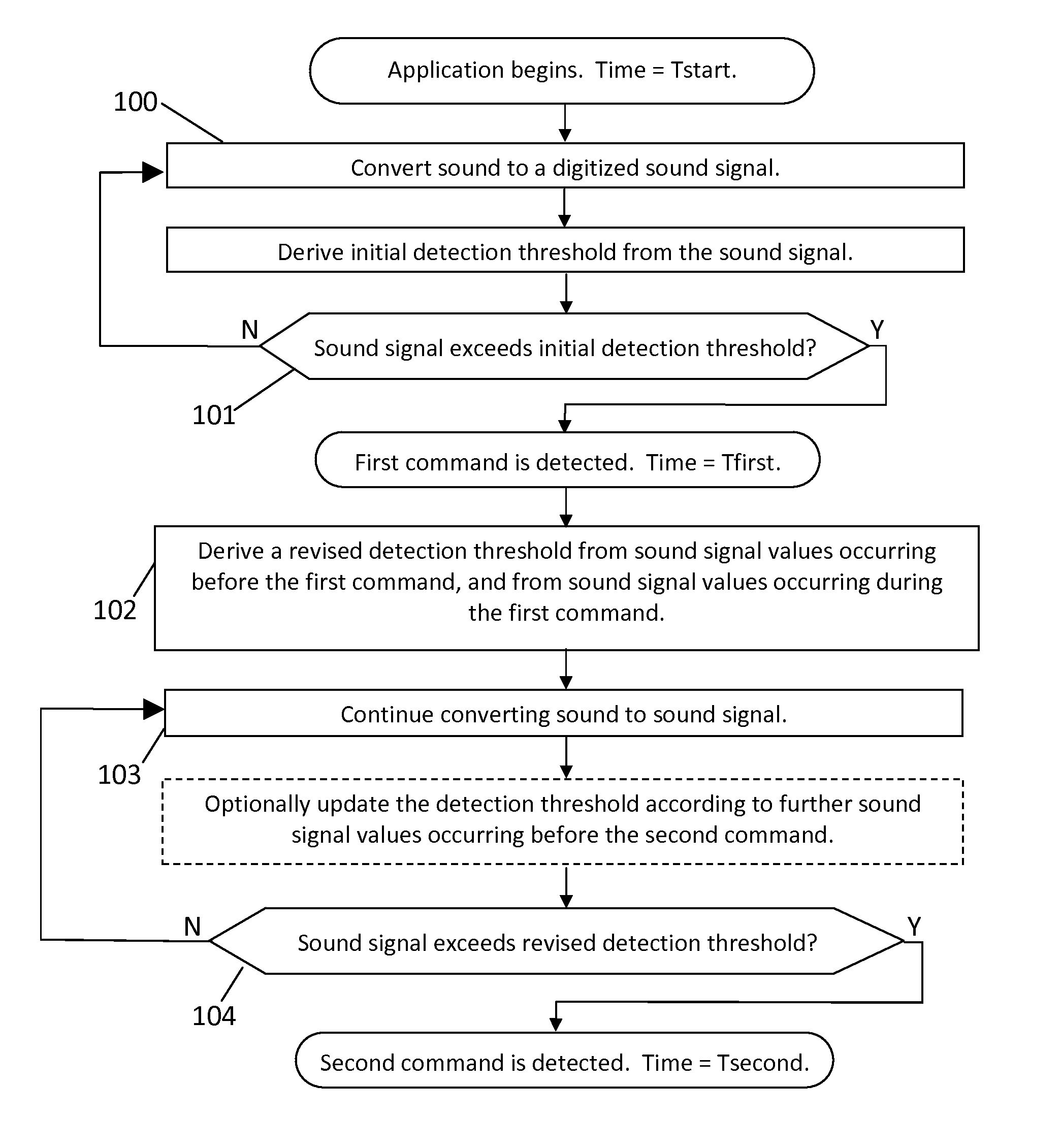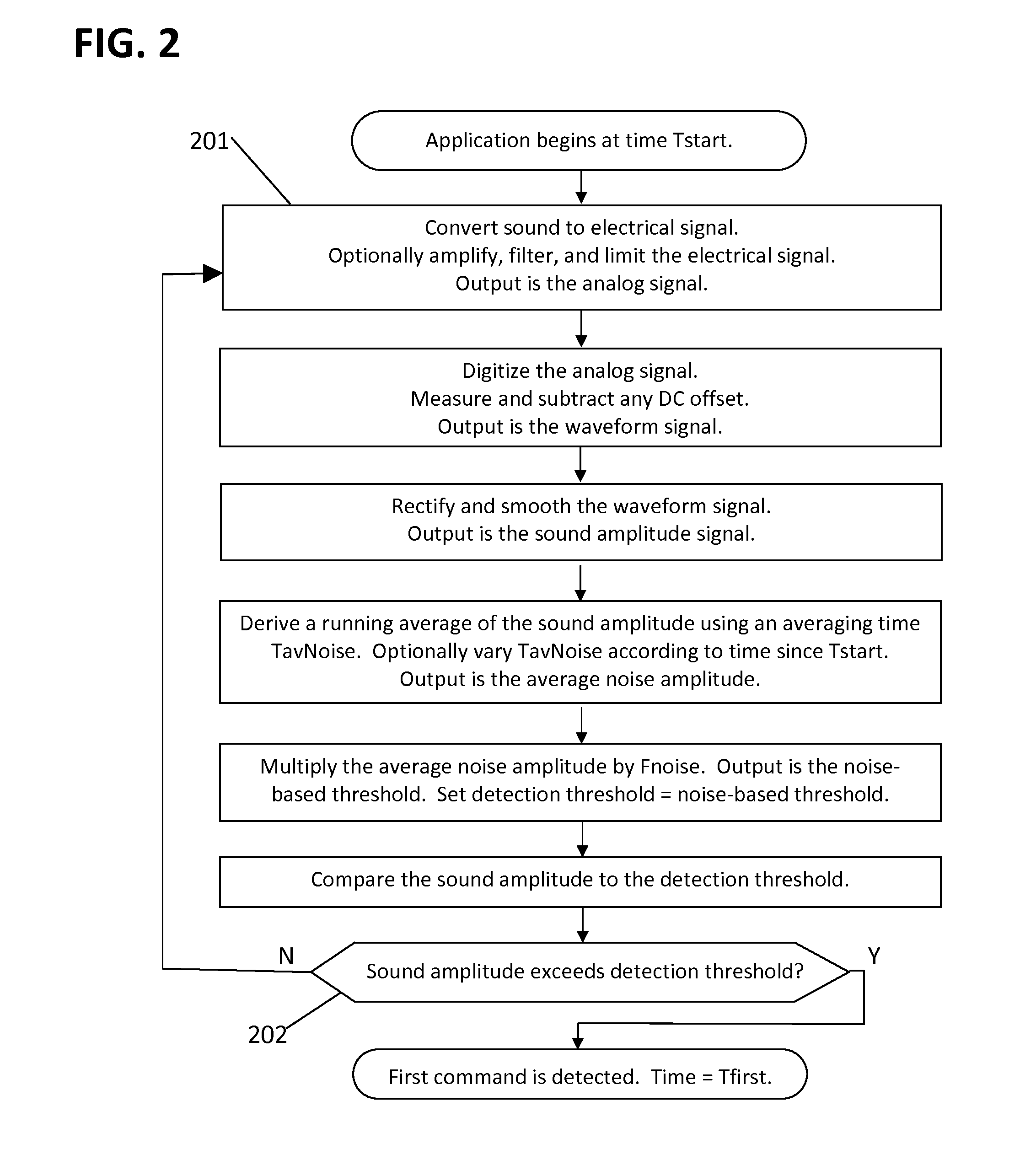Automatic calibration of command-detection thresholds
a command detection and automatic calibration technology, applied in the field of detection of spoken commands, can solve the problems of inability to set an empirical threshold based on command signals, user intolerant of spoken-command failures, and most users will trash the app, so as to achieve clean and reliable command detection, high sensitivity to faint sounds, and flexibility.
- Summary
- Abstract
- Description
- Claims
- Application Information
AI Technical Summary
Benefits of technology
Problems solved by technology
Method used
Image
Examples
Embodiment Construction
Glossary of Terms
[0054]Terms used herein are defined in the following glossary. In case of any disagreement between the definitions in this glossary and definitions appearing elsewhere in the specification, the glossary version shall prevail.
[0055]A “command” is any utterance spoken by any user, for the purpose of controlling a system.
[0056]A command is “detected” by comparing a threshold to a signal representing the sound of the command. Typically the command is detected as soon as the signal exceeds the threshold, or after the signal remains above the threshold for a certain time, or upon other detection conditions which may be applied.
[0057]A “false alarm” is a noise fluctuation that is incorrectly counted as a command.
[0058]The “probability of detection”, or Pd, is the probability that a command will be detected. Typically, Pd is measured by speaking multiple commands, and Pd is the ratio of the number of commands detected divided by the number of commands spoken.
[0059]The “prob...
PUM
 Login to View More
Login to View More Abstract
Description
Claims
Application Information
 Login to View More
Login to View More - R&D
- Intellectual Property
- Life Sciences
- Materials
- Tech Scout
- Unparalleled Data Quality
- Higher Quality Content
- 60% Fewer Hallucinations
Browse by: Latest US Patents, China's latest patents, Technical Efficacy Thesaurus, Application Domain, Technology Topic, Popular Technical Reports.
© 2025 PatSnap. All rights reserved.Legal|Privacy policy|Modern Slavery Act Transparency Statement|Sitemap|About US| Contact US: help@patsnap.com



